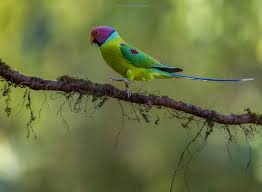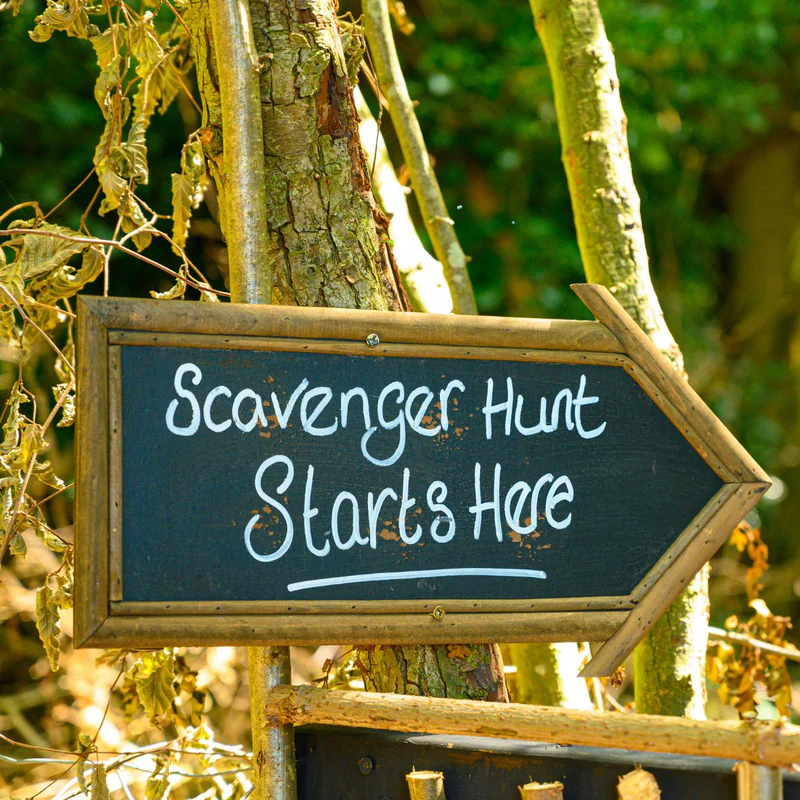
Plum-headed Parakeet
Conditions of detention
Plum-headed Parakeets require a spacious cage that allows for ample movement and play. The cage should have horizontal bars for climbing, perches, toys, and various enrichment activities. It’s important to place the cage in a well-lit area away from drafts and direct sunlight.
Useful Fact: Plum-headed Parakeets are active birds and benefit from several hours of supervised out-of-cage time each day to exercise, explore, and interact with their human companions.
Nutrition and diet
A balanced diet for Plum-headed Parakeets includes high-quality pellets, fresh fruits, vegetables, seeds, and occasional nuts. Leafy greens, carrots, apples, berries, and cooked grains provide essential vitamins and nutrients.
Useful Fact: While seeds can be part of their diet, they should not be the sole component, as they can lead to nutritional imbalances. Offering a variety of fresh foods helps ensure a balanced diet.
Health
Plum-headed Parakeets are generally hardy birds but can be prone to certain health issues such as respiratory infections, feather plucking, and nutritional deficiencies. Regular veterinary check-ups are important for maintaining their health.
Useful Fact: Monitoring their droppings for changes in color or consistency can provide early signs of health issues that require attention.
Grooming and care
Plum-headed Parakeets groom themselves by preening their feathers and enjoy regular baths. Providing a shallow dish of water for bathing or misting them lightly with water can help maintain healthy feathers.
Useful Fact: Regular cleaning of the cage and accessories is crucial to prevent bacterial growth and ensure a hygienic environment.
Education and training
Plum-headed Parakeets are intelligent and can be trained to perform tricks, solve puzzles, and mimic sounds. Positive reinforcement techniques work best, and they benefit from mental stimulation and social interaction.
Useful Fact: Consistent training sessions that are short (10-15 minutes) and frequent are more effective and help reinforce learning and good behavior.
Toys and entertainment
Toys are essential for keeping Plum-headed Parakeets entertained and mentally stimulated. They enjoy a variety of toys, including puzzle toys, foraging toys, and toys that encourage chewing and manipulation.
Useful Fact: Rotate toys regularly to maintain interest and prevent boredom, which can lead to destructive behaviors like feather plucking.
Safety
Ensure the living environment is free from hazards such as toxic plants, fumes from non-stick cookware, and small objects that could be ingested. The cage should be secure with appropriate bar spacing to prevent escape.
Useful Fact: Plum-headed Parakeets are curious and may chew on electrical cords, so keep cords out of reach to prevent accidents.
Accessories
Essential accessories include sturdy perches, food and water dishes, and a variety of toys. Natural wood perches of varying diameters are beneficial for foot health.
Useful Fact: Using perches made of different materials can help prevent pressure sores on the feet and provide exercise for the parakeet’s muscles.
Socialization
Plum-headed Parakeets require significant social interaction to thrive. They form strong bonds with their human companions and can become lonely or depressed if left alone for extended periods.
Useful Fact: Spending quality time with your Plum-headed Parakeet daily, including talking and playing, helps meet their social needs and strengthens your bond.
Travel and Transportation
When traveling, use a secure and well-ventilated travel cage. Acclimate your Plum-headed Parakeet to the travel carrier before trips to reduce stress.
Useful Fact: Cover the travel cage with a light cloth during transport to minimize stress and provide a sense of security.
Behavior and psychology
Plum-headed Parakeets are intelligent and can exhibit complex behaviors. Understanding their body language and vocalizations is crucial for effective communication and care.
Useful Fact: Plum-headed Parakeets are known for their playful and social nature, making them engaging and affectionate companions.
Legal aspects
In most areas, there are few legal restrictions on keeping Plum-headed Parakeets as pets, but it is important to ensure that any parakeets purchased are from reputable breeders or pet stores, and not taken from the wild.
Useful Fact: Always check local regulations to ensure compliance with laws regarding pet ownership and breeding, as some areas may have specific requirements.


